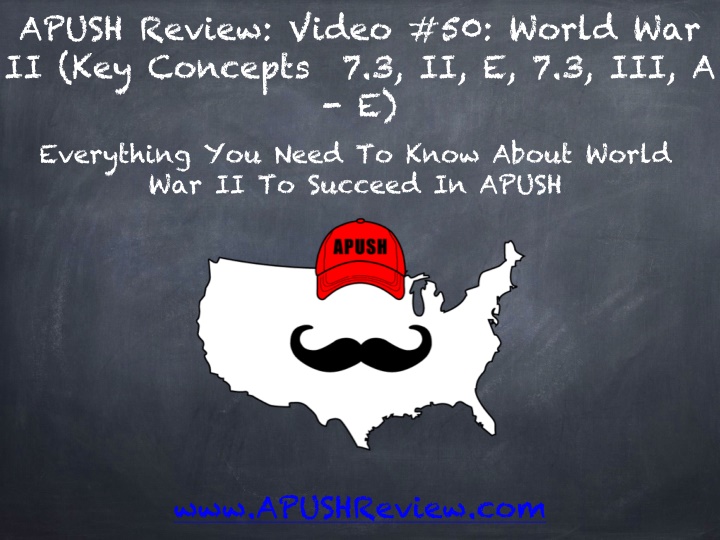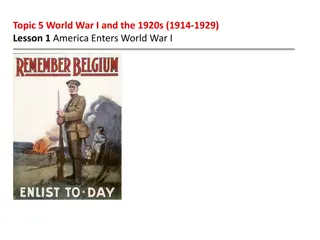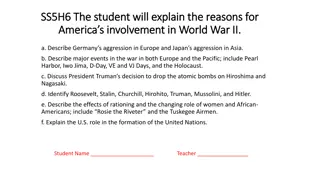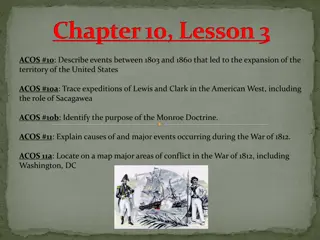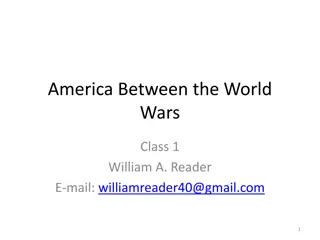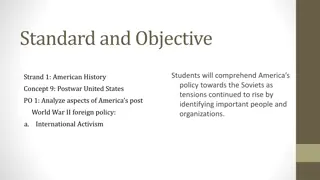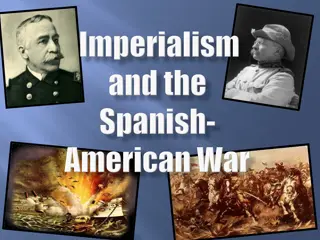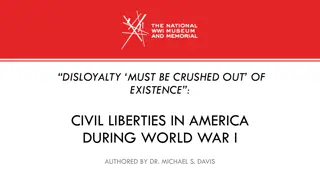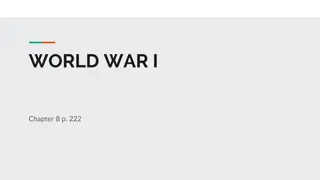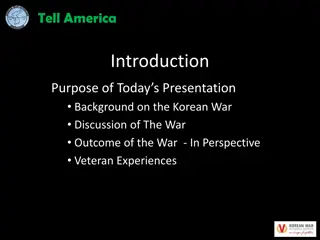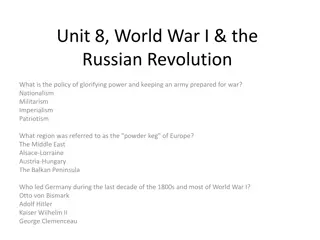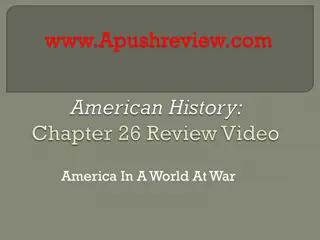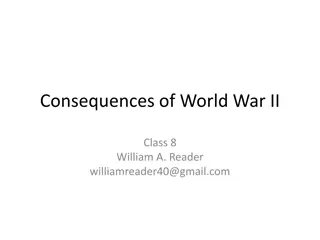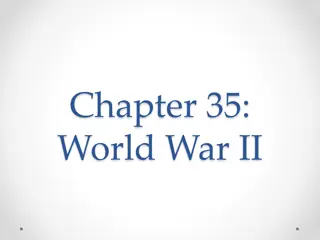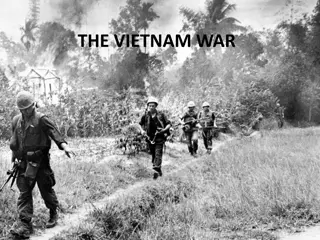America's Involvement in World War II: A Comprehensive Overview
Americans in the 1930s grappled with the rise of fascism and totalitarianism in Europe while striving to maintain isolationism. Events such as the Panay Incident and the Lend-Lease Act eventually drew the U.S. into WWII, shaping views on freedom, mobilization, and the homefront, including changes in gender and racial dynamics and debates over segregation and Japanese internment.
Download Presentation

Please find below an Image/Link to download the presentation.
The content on the website is provided AS IS for your information and personal use only. It may not be sold, licensed, or shared on other websites without obtaining consent from the author.If you encounter any issues during the download, it is possible that the publisher has removed the file from their server.
You are allowed to download the files provided on this website for personal or commercial use, subject to the condition that they are used lawfully. All files are the property of their respective owners.
The content on the website is provided AS IS for your information and personal use only. It may not be sold, licensed, or shared on other websites without obtaining consent from the author.
E N D
Presentation Transcript
APUSH Review: Video #50: World War II (Key Concepts 7.3, II, E, 7.3, III, A - E) Everything You Need To Know About World War II To Succeed In APUSH www.APUSHReview.com
The 1930s Americans were concerned with fascism and totalitarianism in Europe, but opposed military intervention America First Committee - Isolationists (Charles Lindbergh) Neutrality Acts (1935 - 1937): US could not trade with belligerent (warring) nations Did not matter who was the aggressor or who was the victim US citizens could not travel on ships from warring nations
The 1930s Panay Incident (1937): Japan attacked a US ship Led to FDR s Quarantine Speech Encouraged economic embargoes on aggressive nations Munich Conference (1938): Parts of Czechoslovakia were given to Germany; Hitler promised to not take more land September 1, 1939: Germany invaded Poland - official start of WWII
WWII - US Entrance Lend-Lease Act (1941): US could lend crucial supplies to countries the president deems vital (Great Britain) December 7, 1941: Japan attacks Pearl Harbor, US enters WWII
How Did Americans View The War? Freedom and survival vs. fascism and militarism Later reinforced by: Japanese wartime atrocities: Bataan Death March Unbroken Nazi concentration camps and the Holocaust: 11 million people, including 6 million Jews
Mass Mobilization The war helped end the Great Depression and providing necessary equipment and supplies to the Allies
The Homefront New opportunities for women and minorities: Rosie the Riveter - millions of women worked in factories Income increased Mexican-Americans - increase in workers from Mexico via the Bracero Program
The Homefront Debates over segregation: US soldiers fought in segregated units FDR s Executive Order 8802 Banned segregation in defense industries Japanese Internment: Executive Order 9066 100,000 + Japanese-Americans on the West coast were moved to camps 2/3 were born in the US - native born citizens Upheld by Korematsu v. US
Why Did The Allies Win? Military cooperation among allies: Britain and the US Technological and scientific advances Manhattan Project - $2 billion to develop the atomic bomb Atomic bombs ended the war, but sparked debates about their use
Impacts Of The War Much of Asia and Europe laid in ruins US and allies played a large role in postwar peace settlements Japan Nuremberg Trials in Germany US emerged as the most powerful nation on earth
Quick Recap Neutrality in the beginning: American First Committee Neutrality Acts Pearl Harbor War helped end the Great Depression Opportunities for women and minorities Reasons for Allied victory
See You Back Here For Video #51: The Cold War Thanks for watching Best of luck!
